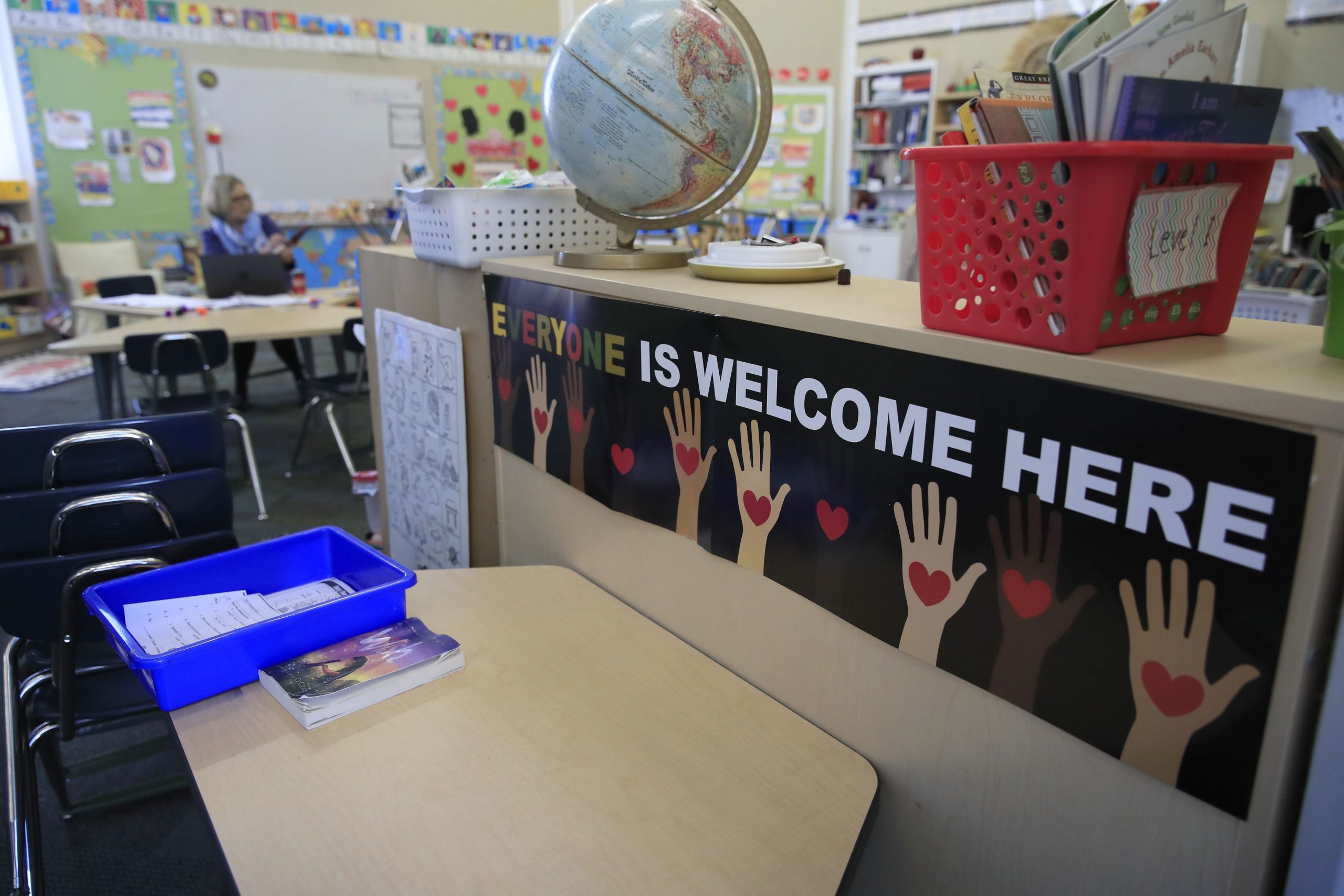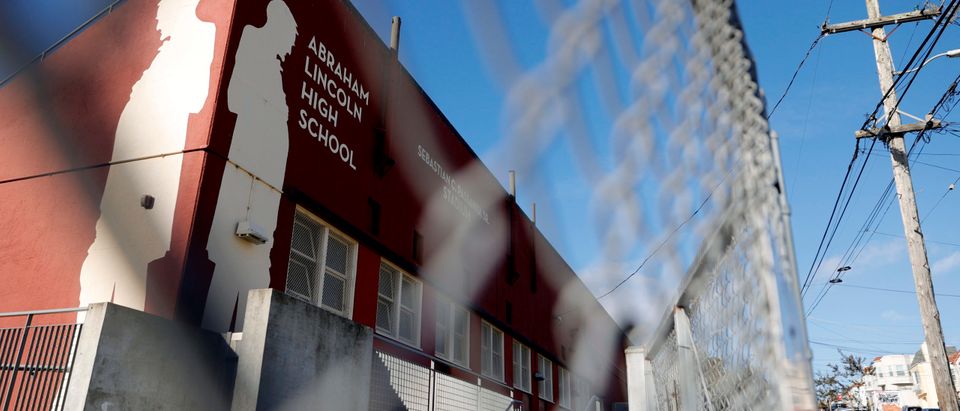San Francisco has sued its own school district, citing a record number of suicidal children and worsening mental health among students due to continued school closure.
The lawsuit filed Thursday is the city’s attempt to pressure the district to reopen for in-person instruction after nearly a year of virtual learning. San Francisco City Attorney Dennis Herrera cited cases of deteriorating mental health among students and statistics showing a surge in suicidal children in emergency rooms.
“Distance learning is not the same thing as school, not even close,” Herrera said in a statement. “We know that teachers are doing heroic work every day trying to keep kids engaged and learning. So are overburdened parents.”
Distance learning is not the same thing as school, not even close. That’s why today I filed for an emergency court order to open SF public schools.
We’ll be in court March 22 for a hearing on the motion. https://t.co/yafAhgRX9S
— Dennis Herrera (@dennisherrera) February 11, 2021
Herrera announced a week prior that the city would sue the San Francisco Board of Education and San Francisco Unified School District for violating state law requiring districts to establish a clear plan during the pandemic that details actions they will take to move toward “classroom-based instruction whenever possible,” the San Francisco Chronicle reported.
According to the lawsuit, one mother, Allison Ariel, said she had found her teen daughter “curled up in a fetal position, crying, next to her laptop at 11 a.m.” She said her daughter has lost faith in the school district and the world, and often cried in the middle of the day
Another mother, Lindsay Sink, said her 7-year-old son has “uncontrollable meltdowns” while her 10-year-old daughter is experiencing “depression and anger.” Sink said that she fears her daughter’s “mental health will continue to suffer” until classrooms reopen.
Nearby hospitals have seen a surge in suicidal children arriving at emergency rooms. UCSF Benioff Children’s Hospital saw a 66% increase in the number of suicidal children in the emergency room, a doubling of children hospitalized for eating disorders, and a 75% increase in youth seeking mental health services who required immediate hospitalizations, the lawsuit said.
The UCSF Children’s Emergency Department at Mission Bay also reported a record high number of suicidal children in January, the lawsuit said. Doctors were quoted explaining the increase in anxiety, depression, and eating disorders among children.

SAN FRANCISCO, CALIFORNIA – DECEMBER 17: Pedestrians walk by a mural of Abraham Lincoln outside of Abraham Lincoln High School on December 17, 2020 in San Francisco, California. (Photo by Justin Sullivan/Getty Images)
The Children’s Health Center and the Healthy Lifestyles Clinic at Zuckerberg San Francisco General Hospital have seen an increase in children with obesity and obesity comorbidities, including high blood pressure, pre-diabetes, type II diabetes, and fatty liver disease, the lawsuit says.
“The medical evidence is clear that keeping public schools closed is catalyzing a mental health crisis among school-aged children in San Francisco,” Dr. Jeanne Noble, director of COVID Response for the UCSF Emergency Department, is quoted saying.
The National Alliance on Mental Illness reports that the lack of social interaction that can negatively affect adults is also found to cause or exacerbate mental health conditions in children up to a decade later. Virtual learning has upended the critical sense of stability in children’s lives that can come from established learning schedules, seeing peers, or participating in extracurricular activities, leading to a sense of alienation among students. (RELATED: ‘My Life Is Very Vague And Lonely’: High School Seniors Give Disturbing Responses To Virtual Schooling Survey)
Herrera said the district’s plan has been full of “ambiguous, empty rhetoric” when he announced the city’s plans to sue. Although the law compels the district to create a plan for students who’ve suffered “significant learning loss” during school closures, not a single student out of the 52,000 in the district have returned to their classrooms in almost a year. Students from disadvantaged backgrounds and students of color have been especially impacted by the closures, district data showed. (RELATED: San Francisco To Sue Its Own School District Over Lack Of Clear Reopening Plan To Force It To Open Classrooms)
BREAKING: San Francisco’s city attorney expands lawsuit against the school district — adding allegations that school officials violated the state constitution and equal rights laws by not providing in-person instruction despite the ability to do so. https://t.co/Tz6DBzN5KK
— San Francisco Chronicle (@sfchronicle) February 9, 2021
Roughly 14,000 students were expected to return to classrooms between January and March as part of a reopening for the district’s youngest and most vulnerable students, including those with special needs and those who are homeless. However, San Francisco school’s district and the teachers’ union had failed to come to an agreement until recently.
The teachers unions reached a tentative agreement with the district to return to classrooms days after the city announced its plans to sue the district to force it to reopen. The agreement stipulates that schools can return to in-person learning once the city is in the Red Tier, meaning there is substantial COVID-19 spread, and teachers are vaccinated.
The lawsuit mentions that while tens of thousands of public school students in San Francisco remain out of classrooms, more than 15,000 children are back in classrooms at 113 private and parochial schools. Those schools have had fewer than five cases of suspected in-person transmission, the lawsuit adds.

LOUISVILLE, KENTUCKY – APRIL 15: Joanne Collins Brock , a second grade teacher at St Francis School (Goshen) , teaches online in her empty classroom on April 15, 2020 in Goshen, Kentucky. (Photo by Andy Lyons/Getty Images)
Infectious disease expert Dr. Anthony Fauci has recommended that schools should reopen and bars close as part of an effort to slow the spread of coronavirus while mitigating the impact of keeping children from the classroom. Former Centers for Disease Control and Prevention (CDC) Director Dr. Tom Frieden echoed this belief, and said in February that schools can be reopened with a “reasonable degree of safety” even before the vaccine is distrusted.
“We can’t hold up reopening schools for vaccination,” Frieden told CBSN. “The fact is, that we have seen very little spread in academic settings in schools. Most of what we see is spread in the community.”



